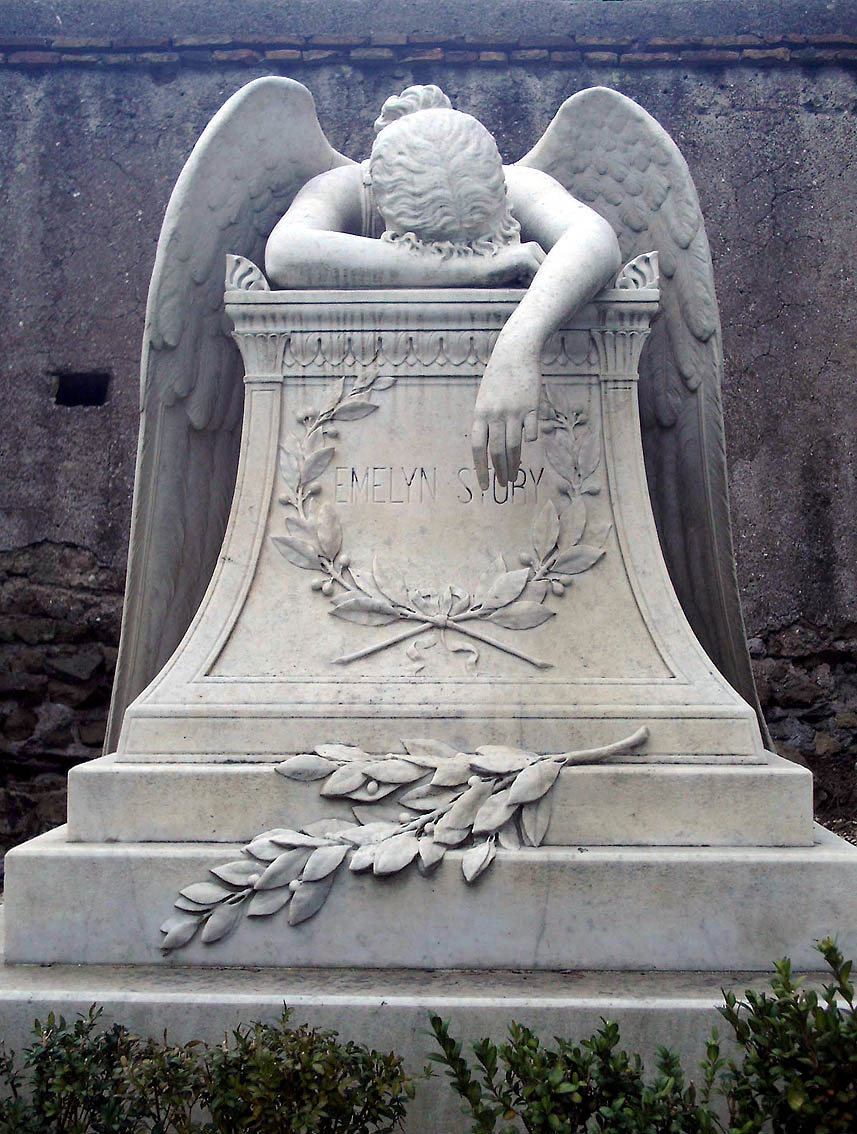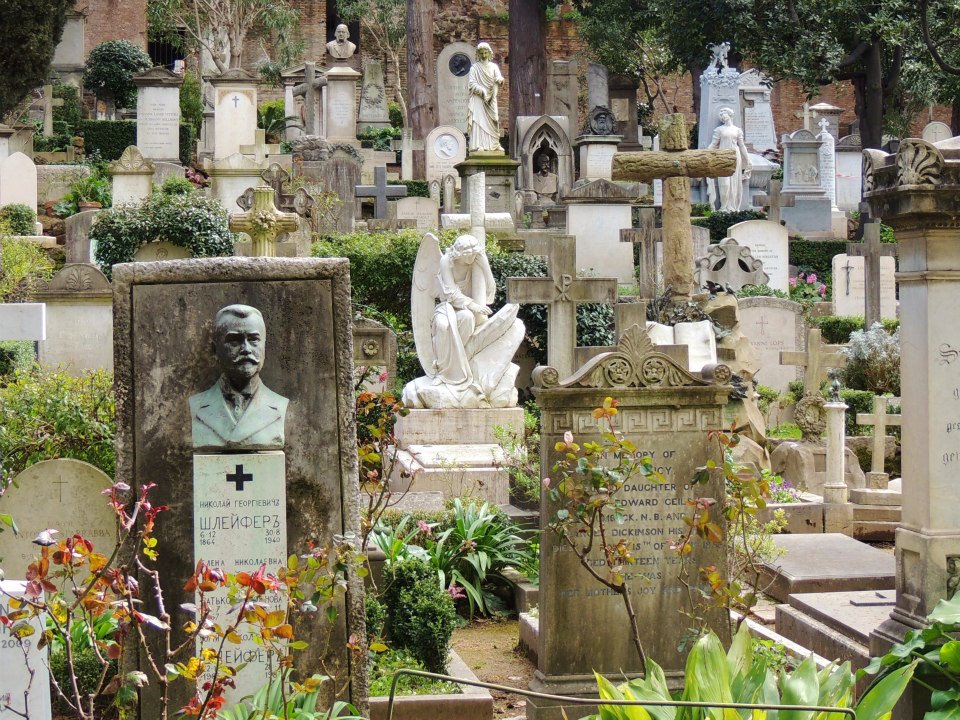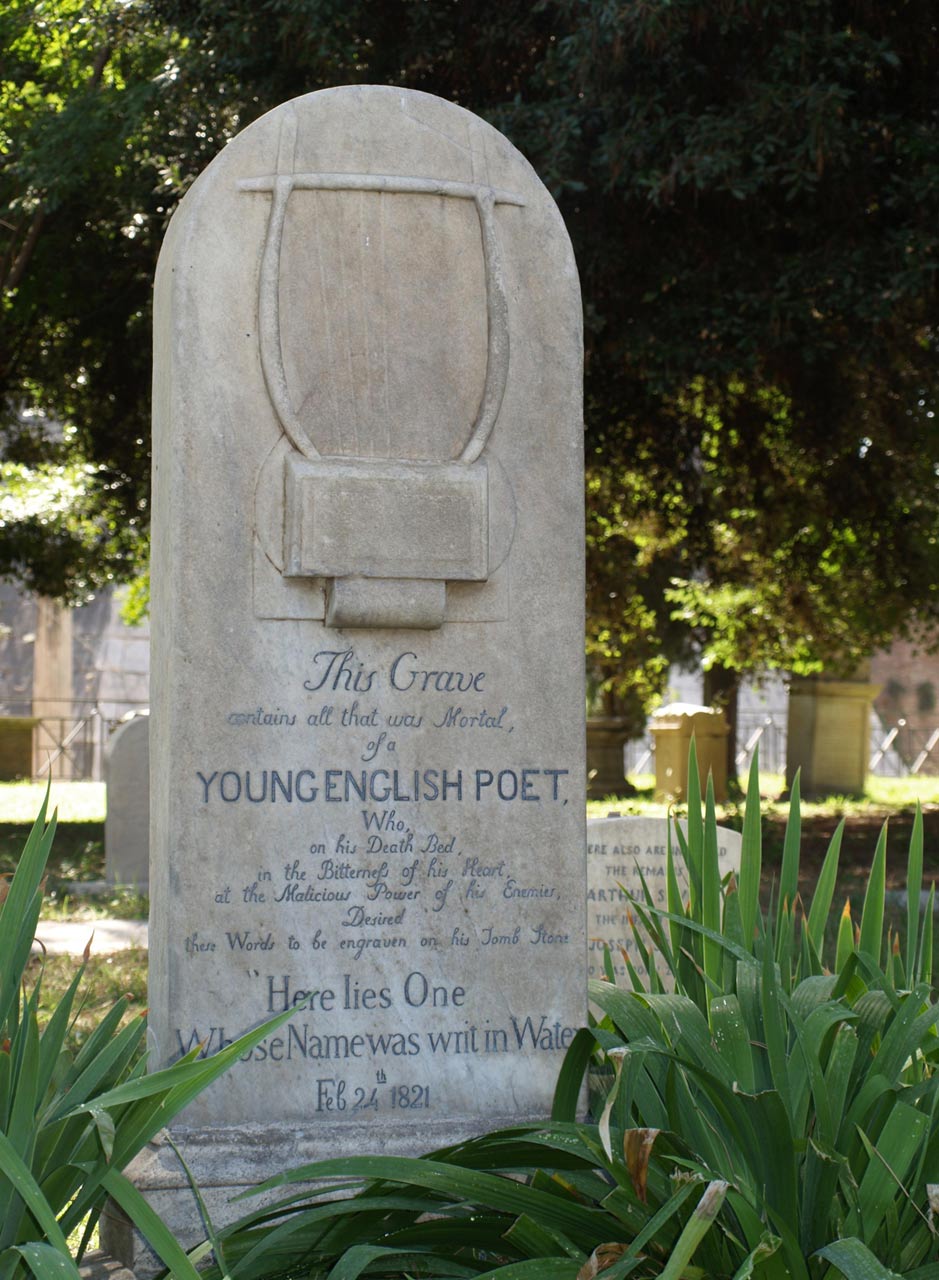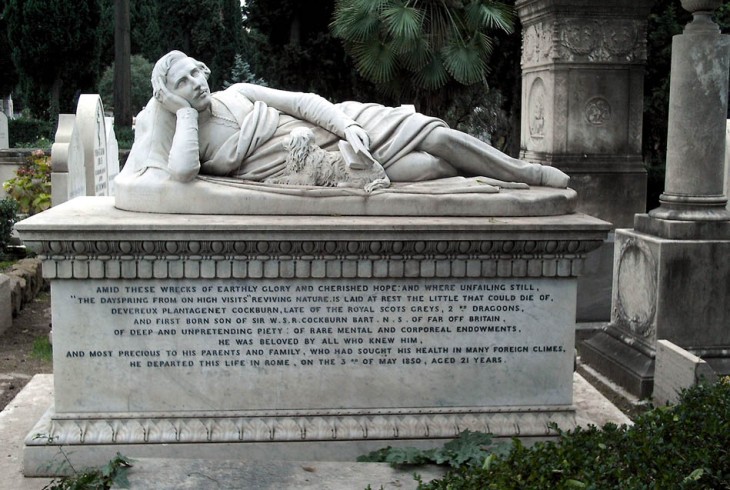A cat stalks amongst the soaring umbrella pines and pomegranate trees like a tiger through a mangrove forest. He pauses, green eyes lighting up, and seems ready to pounce. Suddenly remembering his essentially domestic nature, he instead flops down onto the marble slab of a well-kept grave, content to sun himself in the company of some of Rome’s most illustrious defunct residents. The grave he has chosen is the unprepossessing final resting place of Antonio Gramsci, one of the twentieth century’s most influential political thinkers. This is Rome’s Cimitero Acattolico, also somewhat inaccurately known as the Protestant Cemetery, and it’s one of the most enchanting hidden corners of this city of secrets.

In the bustling chaos of Rome, a metropolis of more than 4 million souls and seemingly twice as many cars, motorbikes, busses, scooters, three-wheelers and any other form of transport you care to mention, tranquillity can be harder to find than a needle in the proverbial haystack. Peace here seems to be the preserve only of the dead, and so to locate it we must go in search of those enjoying their eternal repose. Here, far from the almost omnipresent Roman whine of Vespas rattling down cobbled alleys, we seem to be stepping into another dimension, where the passage of time has been forever stilled.

As its name suggests, this wonderful urban oasis was formed to house the burgeoning number of non-Catholic (acattolici) tourists and expatriates who lived out their final days in Rome. Non-believers could not be buried on the holy ground of the Catholic world’s first city, and so the Vatican resolved the dilemma by assigning them this plot of land just beyond the city walls. And so it is that a litany of famous names are slowly turning to dust in this quiet and quirky little corner of Ostiense. The romantic sensibilities of the poet Percy Shelley were so piqued by the cemetery that he was moved to write “It might make one in love with death, to think that one should be buried in so sweet a place”. His lines had the air of prophecy: a few years later Shelley was drowned in a storm near Livorno, and buried in the Roman graveyard.

It’s not difficult to see what attracted Shelley and his ilk. In the background looms Rome’s only pyramid, the extravagant memorial of a rich Roman by the name of Gaius Cestius. The ancient Aurelian wall edges its way along the side of the cemetery, and inside the sheer variety of flora makes it a worthy worldly rival to Eden itself. No wonder Oscar Wilde thought it without question “the holiest place in Rome”. A place of such beauty that it might, perhaps, force even the most jaded cynic to consider the majestic mystery of life on earth.
 photo by Piero Montesacro, CC BY-SA 3.0, via Wikimedia Commons
photo by Piero Montesacro, CC BY-SA 3.0, via Wikimedia Commons
The cemetery’s most famous resident is to be found in a far-flung corner, in a humble grave that doesn’t even bear his name. The words inscribed there instead at the request of the young English poet have descended into lore as one of poetry’s greatest epitaphs - “here lies one whose name was writ in water”. Ironic that such barbed words on the transience of reputations should ensure John Keats’ own. Gaius Cestius’s ancient architectural ode to vanity could hardly be a stranger bedfellow for Keats and his conviction of man’s tragic ephemerality. And yet together they capture the never-ending struggle between life and death, the tightrope between fame and obscurity along which all of these men and women once walked.
For any Romantic lover of Rome, for anyone who has been inexplicably captured in the city’s thrall, the cemetery possesses a unique and captivating power. It is an enduring memorial to the thousands of wanderers and pilgrims who have chosen to die in this city of eternal history rather than return to the countries of their birth.
Today, November, 2nd, is the festival of All Souls, a day when Italians descend on graveyards across the country to pay their respects to the deceased - if you find yourself in Rome this week, then do yourself a favour and head to the Cimitero Acattolico and take a moment to contemplate the lives of those who came before us.
The Protestant Cemetery is one of the highlights of our Hidden Beauty of Rome private tour, which takes us on a journey to discover some of the Eternal City's most peaceful off-the-beaten-path locations. To discover the timeless beauty of this beautiful corner of Rome and find out why it continues to enchant and inspire visitors even today, join us on our private tour of Rome!




